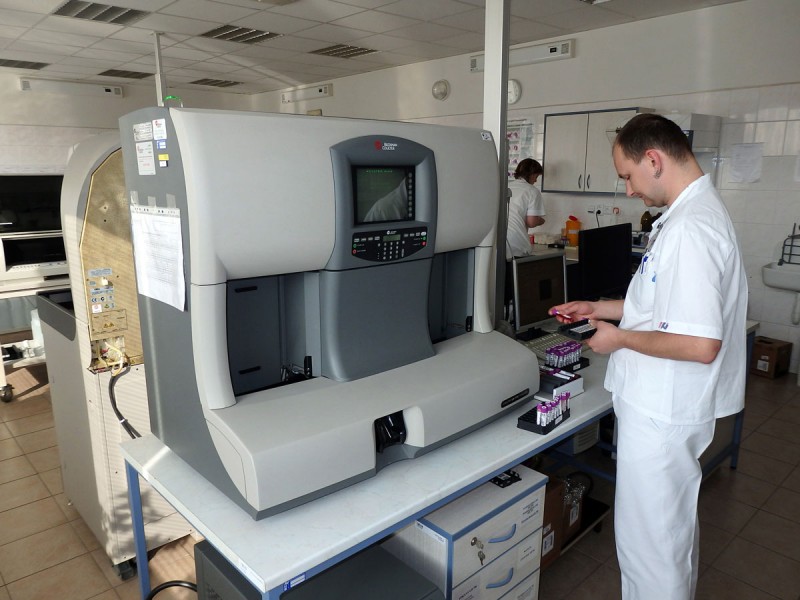A hemogram is a general blood test. It is a comprehensive description of the content of hemoglobin, erythrocytes, leukocytes, hematocrit, reveals the leukocyte formula, as well as color and ESR.
How to conduct a blood hemogram
In order to establish the leukocyte formula and description of cells, the smear is exposed to dyes. The following methods are usually used:
- Romanovsky-Giemsa.
- Wright.
- Pappenheim.
- Nohta.
If necessary, calculate the number of platelets and reticulocytes using special staining methods.
Today, a blood hemogram is carried out through semi-automatic and automatic analyzers. Each equipment differs in its characteristics and technical indicators.
Modern analyzers allow you to conduct a blood hemogram according to a detailed scheme, which includes more than 20 parameters, subject to a small blood volume and high speed. You can set not only the number of cells, but also the size of each of them individually. In this regard, the analyzer additionally displays the average volumes of red blood cells, the average hemoglobin value, as well as the average hemoglobin content in the erythrocyte itself. Setting the leukocyte formula and the number of each type of leukocyte in a blood unit is also not new today. The distribution system of platelets, red blood cells and white blood cells, depending on their size, is displayed on the histogram.
Special hemogram
An extended analysis may be required to diagnose diseases of the circulatory system. It is carried out in highly specialized hematological centers and includes:
- detailed morphology of the cell structure;
- cytochemical analysis;
- erythrocyte resistance to sodium chloride;
- bone marrow examination;
- study of hemoglobin;
- the establishment of metabolic disorders of vitamins and iron.
Decoding the blood hemogram
To conclude, analyze the following indicators:
- The comparative number of red sprouts of blood formation with normal values of red blood cells, hemoglobin and reticulocytes. Set the color.
- The presence or absence of a change in red blood cells.
- The total number of leukocytes, the percentage of their various types (leukocyte formula).
- The ability of the bone marrow to repair itself.
- The absolute and relative content of each type of white blood cell in a given unit of blood volume.
- The type of nuclear shift, if there is a change in the coefficient of mature and immature neutrophils.
- The presence or absence of changes in the morphology of leukocytes.
- Definition of blasts - low-grade white blood cells.
- Platelet count.
- ESR - erythrocyte sedimentation rate.
- Hematopoietic sprouts. The presence or absence of their changes.

Thus, based on the indicators of the blood hemogram, we can talk about the general condition of the entire circulatory system and its disorders. A detailed analysis gives a picture of the development of the disease and allows to predict its course, which is an important stage in the diagnosis and subsequent treatment. Only a specialist is able to correctly interpret the blood test and provide qualified assistance to the patient.